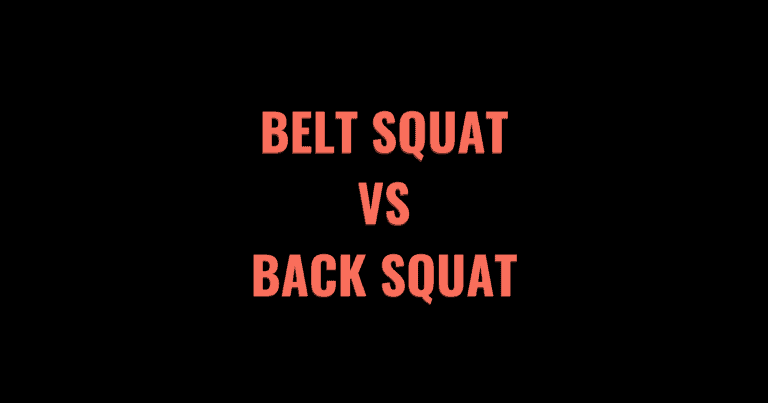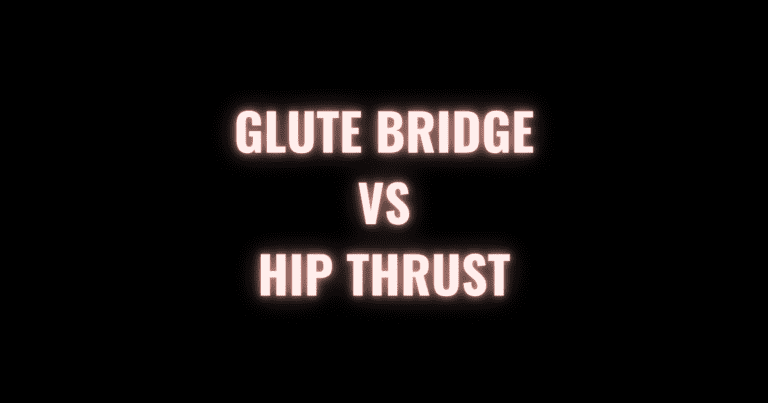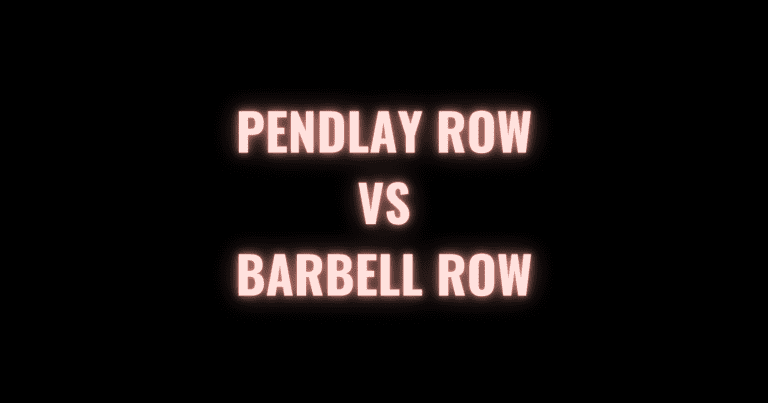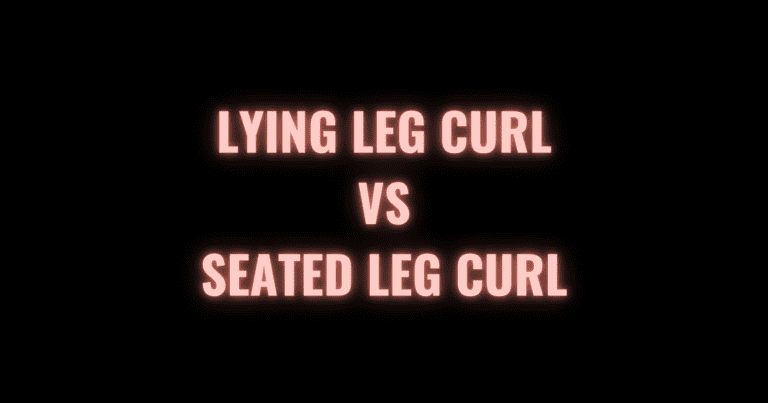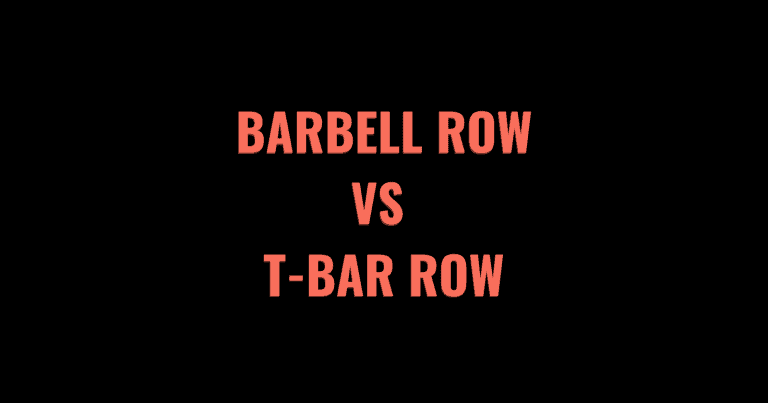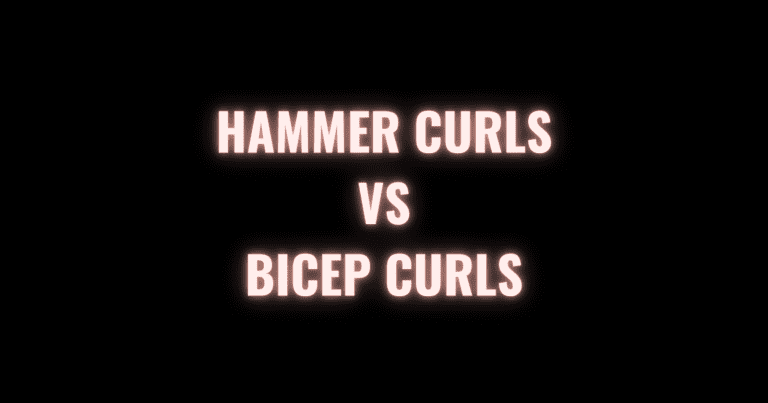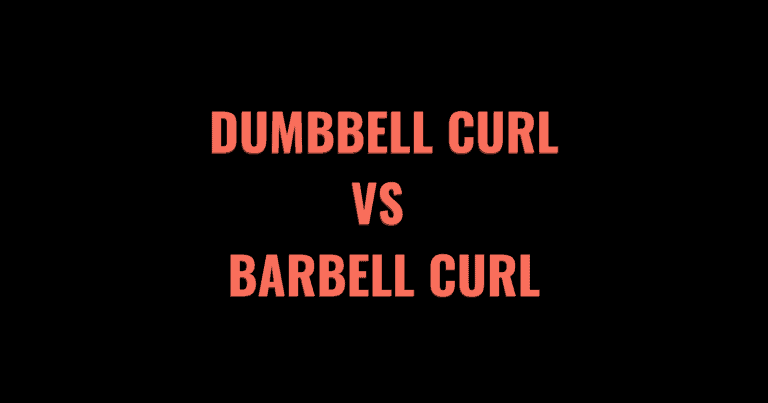Squats are often considered the king of all exercises because they work the entire body, are extremely effective at adding size and strength to the lower body, and are a very functional movement.
Anyone with impressive legs regularly performs some type of squat, whether that’s back squats, front squats, goblet squats, split squats, or hack squats. Machines versus free weights is a popular debate in the fitness industry. Within this debate, two exercises that are commonly compared are back squats and hack squats.
Which exercise is better will depend on the individual. This article will help you decide whether back squats or hack squats will get you closer to your goals. We will discuss the key differences between the two exercises, the pros and cons of each, which one is better for strength, aesthetics, and performance, and when/how to perform them to get the best results.
This article will settle the debate once and for all!
Table of Contents
- 1 What’s the main difference between back squats and hack squats?
- 2 Pros and Cons
- 3 Exercise Form
- 4 Muscles Used
- 5 When to do an exercise
- 6 Squats vs Hack Squats: Which one is better for you?
- 7 FAQs
- 8 Other Exercise Comparison Posts
- 8.1 Flat vs. Incline Bench Press: Which is Better?
- 8.2 Romanian Deadlift vs Deadlift: Which is Better?
- 8.3 Belt Squat vs. Back Squat: Pros & Cons
- 8.4 Glute Bridge vs Hip Thrust: Differences & Benefits
- 8.5 EZ Curl vs Straight Bar Curls: Differences, Pros, and Cons
- 8.6 Preacher Curl vs Bicep Curl: Differences, Pros, and Cons
- 8.7 Pendlay Row vs Barbell Row: Differences and Benefits
- 8.8 Lying Leg Curl vs Seated Leg Curl: Pros & Cons
- 8.9 Barbell Row vs T-Bar Row: Differences, Pros, and Cons
- 8.10 Rack Pulls vs. Deadlifts: Differences, Pros, and Cons
- 8.11 Hammer Curls vs Bicep Curls: Which is Better?
- 8.12 Barbell Curl vs Dumbbell Curl: Benefits & Differences
What’s the main difference between back squats and hack squats?
The main difference between back squats and hack squats is that the hack squat primarily targets the quads. The back squat engages the quads, glutes, hamstrings, core, and other muscle groups. The back squat is considered to be more of a full-body exercise since it develops the entire lower body.
On the other hand, if your primary goal is to grow your quads, then the hack squat is a great alternative to the back squat.
Another key difference between back squats and hack squats is that a back squat is a free-weight exercise and a hack squat is performed on a machine. Some people prefer the stability that a machine offers, however it doesn’t strengthen the stabilizer muscles as well as a free weight movement.
What’s more, a back squat can easily be adjusted to fit anyone’s body, regardless of your height. Most machines are built for those who are of average height, making the machine’s path of motion a problem for many users.
If you have the ability to squat, then it’s hard to make an argument that any other exercise is better. But there are a few pros and cons we will cover next that will help you determine which exercise is better for your goals, body type, and experience level.
Pros and Cons
Back Squat Pros
Here are some benefits of back squats:
- It’s a functional movement that’s often used in sports and daily life. For example, every time you sit down and stand up, you perform a squat.
- Back squats engage the core and several stabilizer muscles, whereas hack squats do not.
- They are one of the most effective exercises for adding size and strength to the lower body, not just the quads.
- Back squats are better for athletic performance compared to hack squats.
- Minimal equipment is required to do a back squat, all you need is a rack, barbell, and some plates.
- Back squats are a free weight exercise and your stance can easily be adjusted to target different areas of the legs.
- They are used in a variety of sports to assess strength, including powerlifting, Crossfit, and Strongman.
Back Squat Cons
Here are some disadvantages of back squats:
- Although you can train to failure with squats, unless you have safety bars set up or a spotter, they are not as safe as hack squats. There’s more room for error and another body part may fatigue before your quads do.
- Back squats are very demanding on the entire body, so recovery time is greater.
- They are more complex to learn than hack squats.
- Back squats place more stress on the spine, which can be problematic if you suffer from back pain or have a previous injury.
- Ego-lifting is more common with the back squat than the hack squat. If too much weight is added, the range of motion will be shortened.
- They don’t isolate the quads as well as hack squats.
- Your range of motion may be limited due to poor ankle and/or knee mobility.
Hack Squat Pros
Here are some pros of hack squats:
- Hack squats are easier to learn than back squats and are great for beginners.
- They place less pressure on the spine, and even those with back pain or a previous back injury can still effectively train their legs.
- There are safety bars built in so you can safely train to failure without a spotter.
- Hack squats isolate the quads more than back squats. If quads are a weak point for you, hack squats may be better.
- You are on a fixed path of motion, so there’s a lesser chance of form deviation and injury.
- Hack squats aren’t as fatiguing as back squats, reducing your recovery time.
- Most gyms have a hack squat machine, but they are not as common as a squat rack. You can perform hack squats using a smith machine and even a barbell with some plates, but it’s trickier to set up.
Hack Squat Cons
Here are some cons of hack squats:
- There are various types of hack squat machines which can be a pro and a con. Some machines will suit your body better, while others may cause issues. Different hack squat machines will make it difficult to track progress.
- You’re limited to a specific path and range of motion on a hack squat. With barbell squats, you can freely adjust your form, range of motion, and stance.
- Hack squats don’t strengthen or develop the stabilizer muscles, such as the core, as well as squats.
- They aren’t as functional and don’t have as much carry-over to other lifts, sports, and activities of daily living.
- Hack squats primarily target the quads and most people are already quad dominant. Squats are a better option if you want to develop and strengthen your glutes and hamstrings.
- In regards to athletic performance, hack squats are inferior to squats.
- The sled’s weight on a hack squat may be a limiting factor for some beginners because it might be too heavy. Whereas with back squats, you can scale down to just the bar or your bodyweight.
Exercise Form
How to do a Back Squat correctly
- To do a back squat, you will need an Olympic barbell, squat rack, weight clips, and Olympic plates. Also, flat-soled shoes, lifters, or even going barefoot is ideal for this exercise.
- Before starting, adjust the height of the squat rack so the barbell is roughly at shoulder height. You should be able to easily un-rack and re-rack the barbell.
- Move the safety bars to where you can safely drop the barbell in case you fail. Make sure they are not too high because that will restrict your range of motion. You should be able to squat just below parallel before the safety bars contact the barbell.
- Step underneath the barbell and set the barbell on your upper back/shoulders. Grab the barbell on both sides with a slightly wider than shoulder-width grip.
- Un-rack the barbell by standing straight up. Take two to three steps away from the rack.
- Move your feet so that they are roughly shoulder-width apart with your toes slightly pointed out.
- Take a deep breath and begin to descend by bending the knees and hips similar to how you would sit down in a chair.
- Keep your head/neck/spine neutral by looking straight ahead, not up or down.
- Once your hips are at or below 90-degrees, pause for a brief moment.
- Exhale while standing back up by pushing through the floor. The weight should be evenly distributed through the foot.
- Once you approach full extension, squeeze your glutes and hamstrings to drive your hips forward.
- Repeat for the desired number of reps.
Watch this video from Squat University to see how to squat with correct form:
How to do a Hack Squat correctly
- To do this exercise you will need a hack squat machine, Olympic plates, and flat-soled shoes.
- Adjust the starting height of the sled so you can safely un-rack and re-rack it.
- Climb into the machine and rest your back and head on the back pad.
- Position your feet on the platform so that they are in the middle of the platform with your toes slightly pointed out. You should have a shoulder-width stance with a slight bend in the knees.
- Unrack the sled by standing straight up and moving the safety bar out of the way. They are normally found on both sides of you.
- Take a deep breath to brace and begin the descent by bending the knees and hips.
- Look straight ahead to keep a neutral spine.
- Keep descending until your hips reach 90-degrees or below.
- Pause for a brief moment, then exhale while pushing the sled upward by extending your legs at the hips and knees. Keep your heels down at all times.
- Repeat for the desired number of reps.
Check out this video from Bodybuilding.com to see how to perform a hack squat properly:
Muscles Used
Back Squat Muscles Used
The back squat primarily works the quadriceps, glutes, and hamstrings. It also recruits muscles of the core, adductors, calves, upper back, and erectors.
Primary
- Quads
- Rectus Femoris
- Vastus Lateralis
- Vastus Medialis
- Vastus Intermedius
- Glutes
- Gluteus Maximus
- Gluteus Minimus
- Gluteus Medius
- Hamstrings
- Biceps Femoris
- Semimembranosus
- Semitendinosus
Secondary
- Upper Back
- Traps
- Rhomboids
- Lats
- Erector Spinae
- Adductors
- Calves
- Core
- Obliques
- Transverse Abdominus
- Rectus Abdominus
Here’s a full breakdown of the muscles worked by squats.
Hack Squat Muscles Used
The hack squat primarily targets the quads, but it also works the glutes, hamstrings, calves, and to a lesser extent, the core.
Primary
- Quads
- Vastus Intermedius
- Vastus Lateralis
- Vastus Medialis
- Rectus Femoris
Secondary
- Glutes
- Gluteus Maximus
- Gluteus Minimus
- Hamstrings
- Biceps Femoris
- Semimembranosus
- Semitendinosus
- Calves
- Core
- Transverse Abdominus
- Rectus Abdominus
- Obliques
When to do an exercise
When to do a Back Squat
If you are someone that wants to grow and strengthen your lower body, improve as an athlete, doesn’t have back pain or a previous back injury, and has the mobility to perform a squat properly, you should consider doing back squats.
Back squats are a very taxing exercise. To get the most out of the movement and reduce injury risk, you should perform them at the beginning of a workout. Although back squats engage multiple muscle groups, they are mainly considered to be a lower-body exercise.
More often than not, back squats are programmed on leg or lower body days. However, some people will do them along with the bench press and deadlifts. If your primary goal is to build strength, then stick to the 1-5 rep range. If you want to increase the size of your legs, then the 6-12 rep range will suit you best.
Squats are usually done 1-3 times per week. If you want to perform hack squats and back squats, either split them up across two sessions or do back squats before hacks squats if they are in the same session.
When to do a Hack Squat
Anyone that wants to grow their legs, specifically their quads, and limit spinal loading should consider performing hack squats. Hack squats are most commonly programmed on lower body workouts because they primarily target the quads.
Hack squats aren’t as taxing as back squats, but they are still a compound movement so doing them early on in a workout is ideal. Most people work within the 6-15 rep range with hack squats because you can safely train to failure and they are more suited toward hypertrophy rather than strength.
Hack squats are a great accessory exercise to the barbell back squat. Depending on your training split, you can train them in the same session or split them up across the week. If your main goal is to grow your quads, consider dedicating one day to hack squats and another to back squats. This will help add training volume to your quads while minimizing fatigue.
Squats vs Hack Squats: Which one is better for you?
If you could only pick one leg exercise to do for the rest of your life, a back squat would be it. The back squat is better for strength, overall leg hypertrophy, functionality, and performance. In other words, the back squat is truly the king of all exercises.
But that doesn’t mean that hack squats are a worthless exercise.
Arguably, hack squats are one of the best machine exercises for quad hypertrophy. They also closely replicate the squat, so they will have carry-over to other exercises and activities of daily living. Not every gym has a hack squat machine, but if they do, incorporate it into your routine!
Doing more than one exercise for any body part will help minimize overuse injury, optimize hypertrophy, and keep training fun!
FAQs
The hack squat is easier to learn than the back squat. This makes it useful for beginners looking to develop their leg muscles, especially the quads. The hack squat also has a lower likelihood of injury than the back squat.
The back squat more closely resembles the functional squat used in daily life. It engages several muscles that the hack squat does not, including the core and other stabilizer muscles.
The back squat is one of the competitive powerlifting movements, so it is essential for powerlifters to perform. The hack squat may be useful as an accessory movement, but it is less important than the back squat.
Other Exercise Comparison Posts
If you enjoyed this post, check out our comparisons of other popular exercises below.

